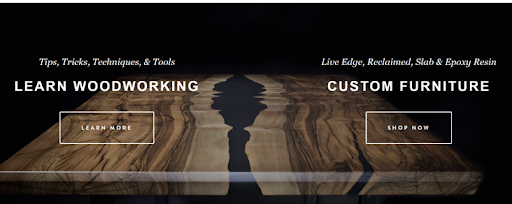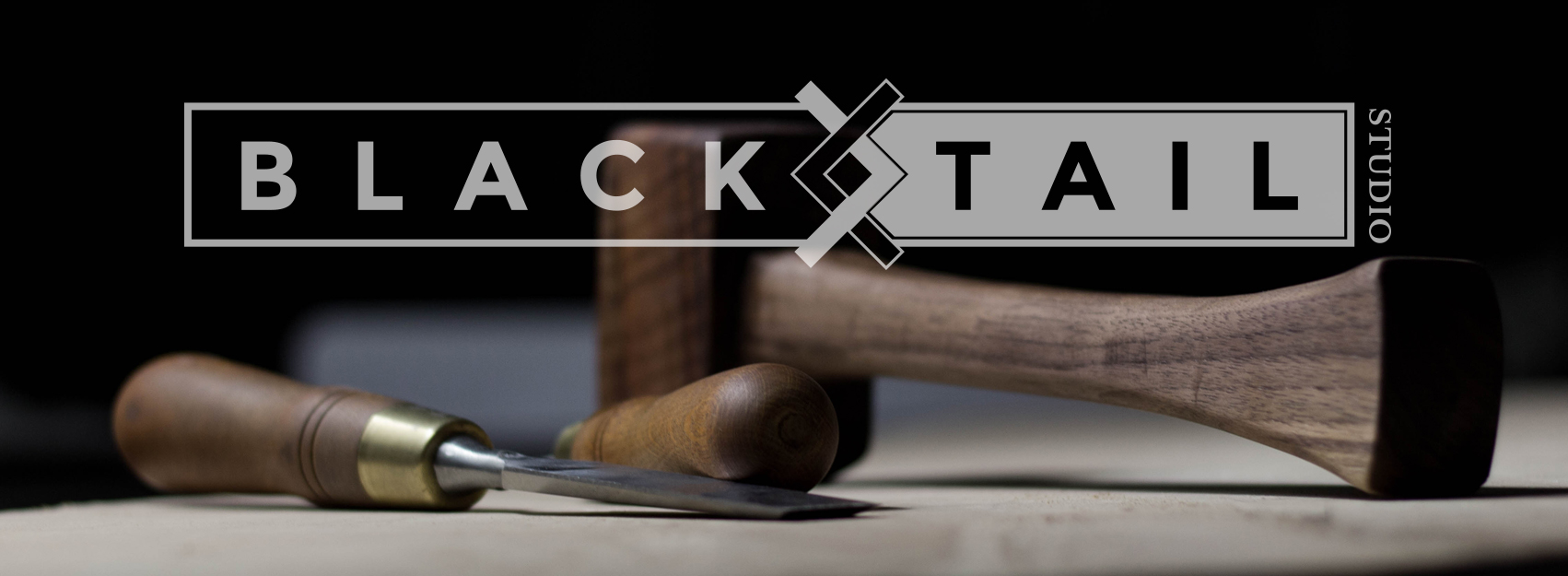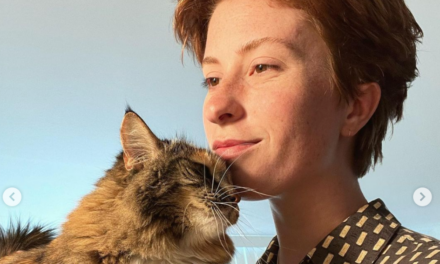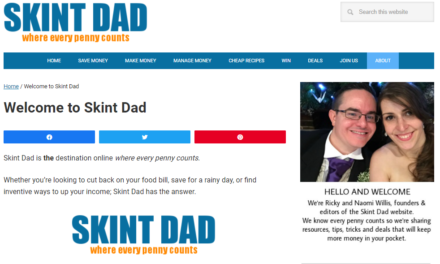Entrepreneur: Cam Anderson
Business: Blacktail Studio
Tilt: Behind-the-scenes of high-end woodworking.
Scene: Website, YouTube (2.33M), Instagram (255K), TikTok (882.8K), Facebook (928K)
Snack Bites:
- Cam Anderson took up woodworking as a hobby when he was an EMT pilot to fill the time between his week-on, week-off schedule.
- He opened a business selling his high-end furniture and turned to digital platforms to show off the business (even though he didn’t know what a hashtag was).
- Today, Blacktail Studios is both a retail custom furniture business and a content business where Cam sells how-to content and more.
Why We Stan: Cam is a great entrepreneur. He turned his flair for high-end woodworking projects into a business and his talent for communicating how he does it into another business. We also like that he uses the same brand name for both ventures and uses what he learns from audience behavior in his content business to inform his retail business.
The Story of Cam Anderson
What turns an emergency medical pilot into a woodworking YouTuber? Boredom.
With a seven-day on, seven-day off schedule as a pilot for a not-for-profit patient transport service LifeFlight, Cam Anderson knew he needed a hobby. As it happens, he knew someone who made a living creating barnwood furniture and decided it was worth a shot.
Cam wasn’t all that good at woodworking in the beginning. Little by little, he got better and learned to make fewer mistakes. He sold his first barnwood table on Etsy for $350. Unfortunately, Cam offered free shipping, which cost him $150. He learned from that mistake too.
Cam’s pieces gained attention when he posted pictures of his first epoxy table on Instagram. As he explains to Tubefilter, he was never big on social media. His wife even had to explain what a hashtag was. But he tried and got the hang of Instagram, and as his following grew, Cam figured he might as well take a stab at YouTube.
Cam Edwards of @BlackTailpdx didn't know what a hashtag was when he started on #Instagram. Today, his #Woodworking videos attract millions of views. #ContentEntrepreneur Share on XHis fifth or sixth video – a tutorial showing how to make an epoxy table – resonated with viewers. His channel shot up to about 20K subscribers. Two years into his retail business, it became clear his content could also become a highly successful business on its own.

Retail and content businesses work together
Today, Cam is the sole employee and owner of Blacktail Studio, a single brand with two operations – retail and content.
“I’m only one guy. I can only make so many tables in a year,” Cam tells UpFlip. “But there’s no limit to how many views I can get.”
On the content side, Blacktail Studio has a combined audience of over 4.3M on YouTube, Instagram, TikTok, and Facebook. Cam spends just as much energy on content creation as on woodworking projects.
Sometimes, Cam chooses to take on retail projects based on their potential to make a good video. He also evolved his retail business into custom pieces so he could avoid making items he’s already shown on the content side.
#ContentEntrepreneur Cam Edwards selects his retail woodworking projects based on their potential to make a good video for his #ContentBusiness via @BlackTailpdx. #Stan Share on XHis reason is simple: YouTube and other platforms generate more business for his shop than any individual project. More importantly, his success as a content entrepreneur is not limited in the same manner as being a woodworking entrepreneur.
This two-year-old video about making a $10K table in his garage has earned over 5M views. In 15 minutes, he hits the highlights of the table and the process for viewers.
Cam works with many companies who sponsor his videos, from larger retailers like Home Depot to tool producers like Wagner Meters. What they all have in common is this: Cam believes in the brands and their products. As he says in the Tubefilter interview, he doesn’t accept most sponsorship offers he gets because they are a bad fit for his Blacktail Studios brand.
Woodworking turns dollars, too
Of course, all this isn’t to say that his woodworking isn’t extremely profitable in its own right. He’s gone from selling a table for a few hundred bucks on Etsy to regularly turning down $20K commissioned projects that don’t fit his business model, Cam explains to UpFlip. It didn’t take a magic spell or a complicated strategy to make the jump. It took time.
Cam follows the axiom that “[his product] is worth what someone will pay for it.” As Cam has gotten better at his craft since his 2016 launch, his prices have followed suit. He says he prices his products based on what someone will pay. For example, sometimes high-end products sell better at higher prices because that cost reflects the quality. Cam estimates to UpFlip that he typically makes a 60% to 70% profit on his furniture.
Part of Cam’s success, both as a woodworker and a content entrepreneur, has to be due to his personality. He comes across as a straightforward, honest guy. If a customer request could present a problem, Cam always tells them. On YouTube, he frequently speaks about or shows mistakes he happens to make.
Cam embraces being open about his woodworking creation process, from slipups to masterstrokes. In doing so, Cam engages his audience and earns his clients’ trust.
About the author
Leo Bonacci writes, proofreads, and edits for The Tilt. A student of Hobart and William Smith Colleges, he’s a fan of classical mythology as well as the English language. Leo’s interest in storytelling extends to his great enjoyment of movies and film, from low-budget schlockfests to cinematic masterpieces.









